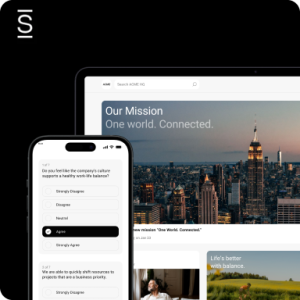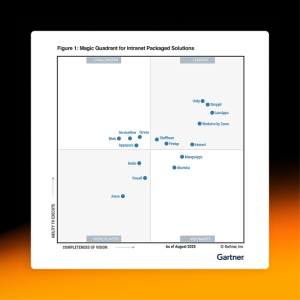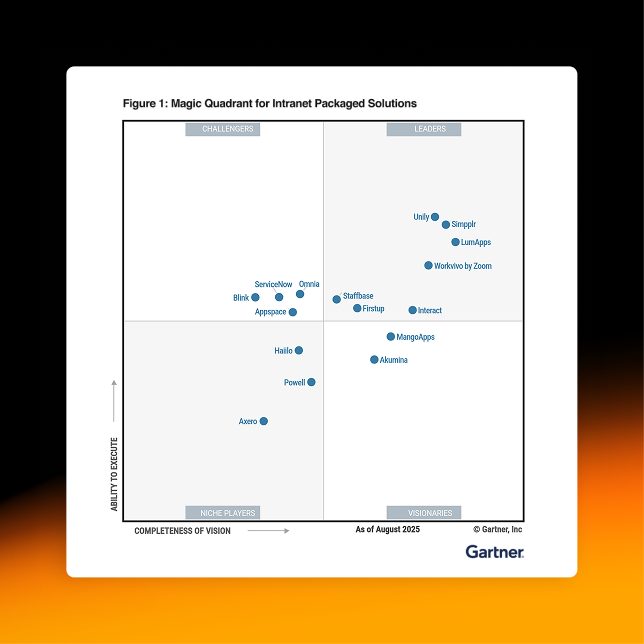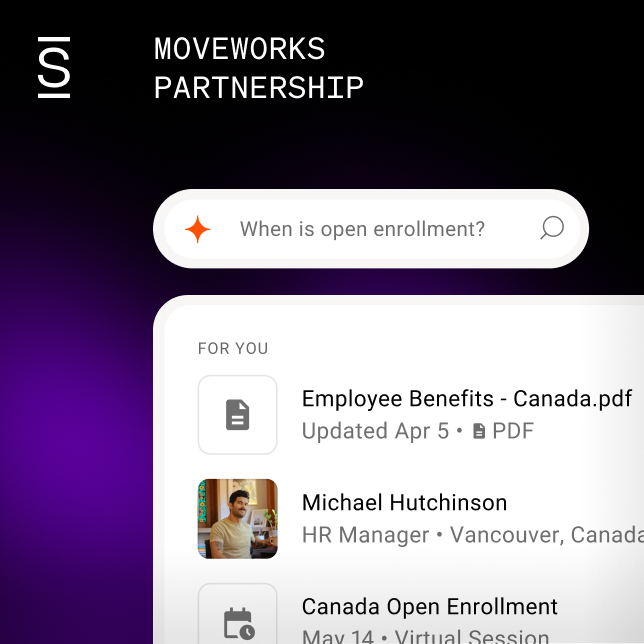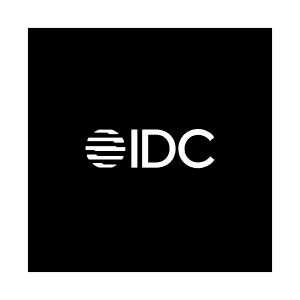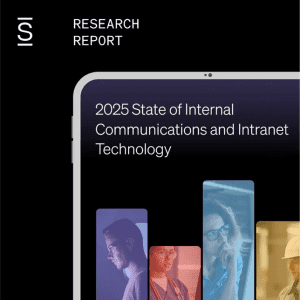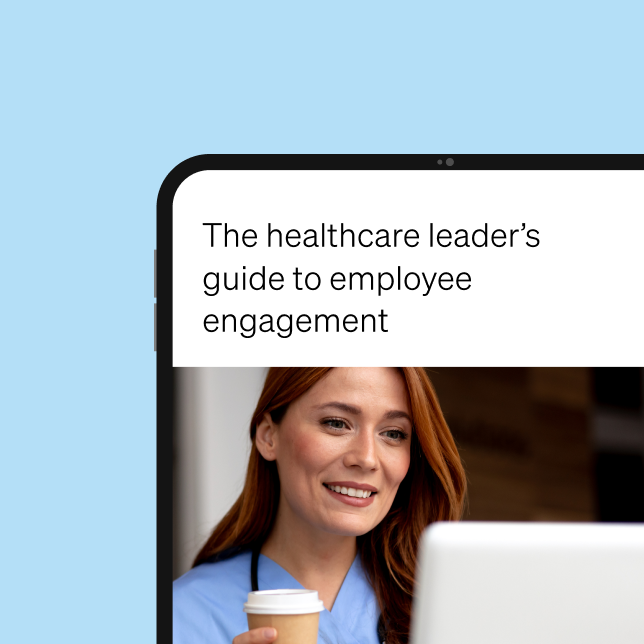A silent crisis has been unfolding in healthcare organizations across the country. By 2027, almost one-fifth of the total nursing workforce plans to leave. Physicians and essential support personnel are likewise streaming through the exits — disillusioned and burned out. This exodus threatens patient outcomes, safety, and operational stability.

Healthcare employee engagement: 5 steps to reconnecting your workforce
Most healthcare organizations operate in two different worlds. Office staff shape decisions and policies. Patient-facing workers — physicians, nurses, and support personnel — deliver care but rarely get a say in how things are run. This communication divide fuels burnout, undermines excellence, and contributes to workforce instability.
Smart healthcare leaders recognize this crisis demands a fundamentally new approach to workforce engagement. The problem reflects a systemic failure to properly connect, value, and support clinical staff amid increasing pressures and falling employee satisfaction.
Effective employee communication is the key to bridging this divide. By creating inclusive channels for information sharing, establishing meaningful feedback loops, and giving a voice to patient-facing employees to shape organizational decisions, healthcare organizations can combat burnout and rebuild workforce stability.
Our new ebook, The healthcare leader’s guide to employee engagement, provides a comprehensive framework to transform healthcare employee engagement and rebuild workforce stability from the ground up.
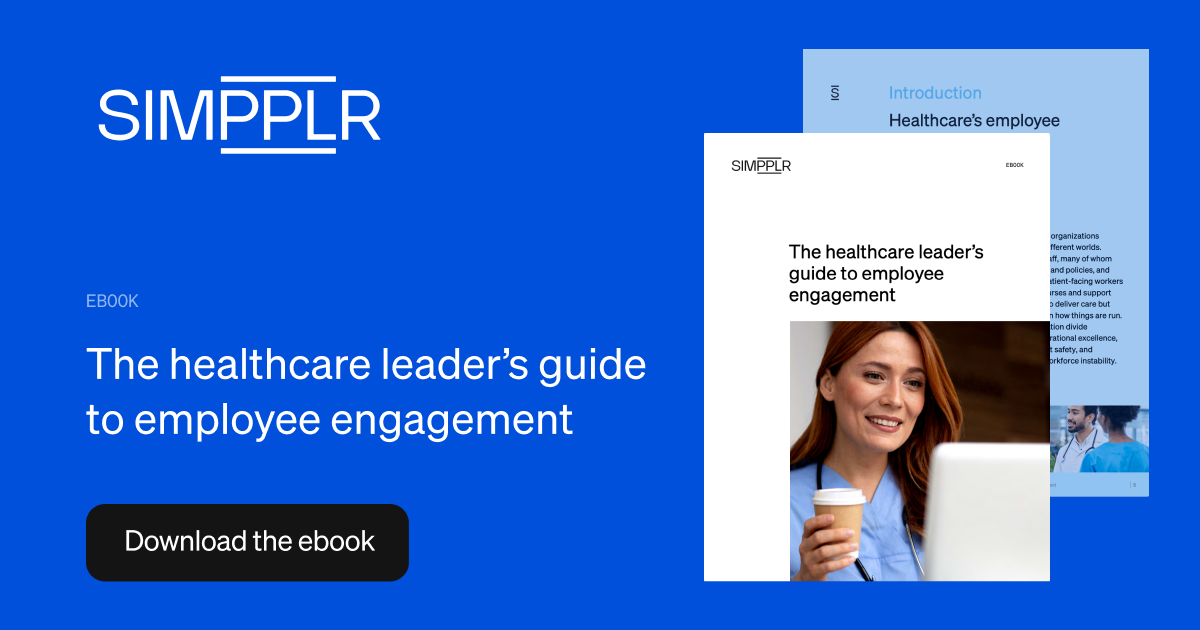
The high cost of disengaged healthcare workers

The effects of healthcare employee disengagement cascade through every aspect of operations. The disconnection threatens workforce stability, patient outcomes, and financial sustainability. When communication breaks down between leadership and patient-facing staff, critical information fails to reach the right people at the right time — creating multiple vulnerabilities throughout your organization.
High turnover directly impacts patient safety and care, leading to a 7% increase in patient falls, 12% rise in medication errors, and 15% decline in patient satisfaction scores.
Disengagement impacts every aspect of healthcare delivery:
- Patient safety suffers when critical information fails to reach caregivers
- Institutional knowledge vanishes as experienced staff leave the organization
- Financial stability erodes with increasing reliance on expensive temporary staffing
- Care quality declines despite the best efforts of remaining, often overwhelmed staff
- Recruitment efforts suffer as word spreads about workplace culture challenges
The average hospital has turned over nearly 107% of its workforce over the past five years (NSI Nursing Solutions).
Behind these alarming trends lies a fundamental communication breakdown. When healthcare workers repeatedly say they feel unheard and undervalued, they’re identifying the missing link between administrative offices and patient care areas.
Effective communication is about more than the flow of information. It’s how healthcare leaders create the recognition, transparency, and trust that keep talented professionals committed to their organization’s mission.
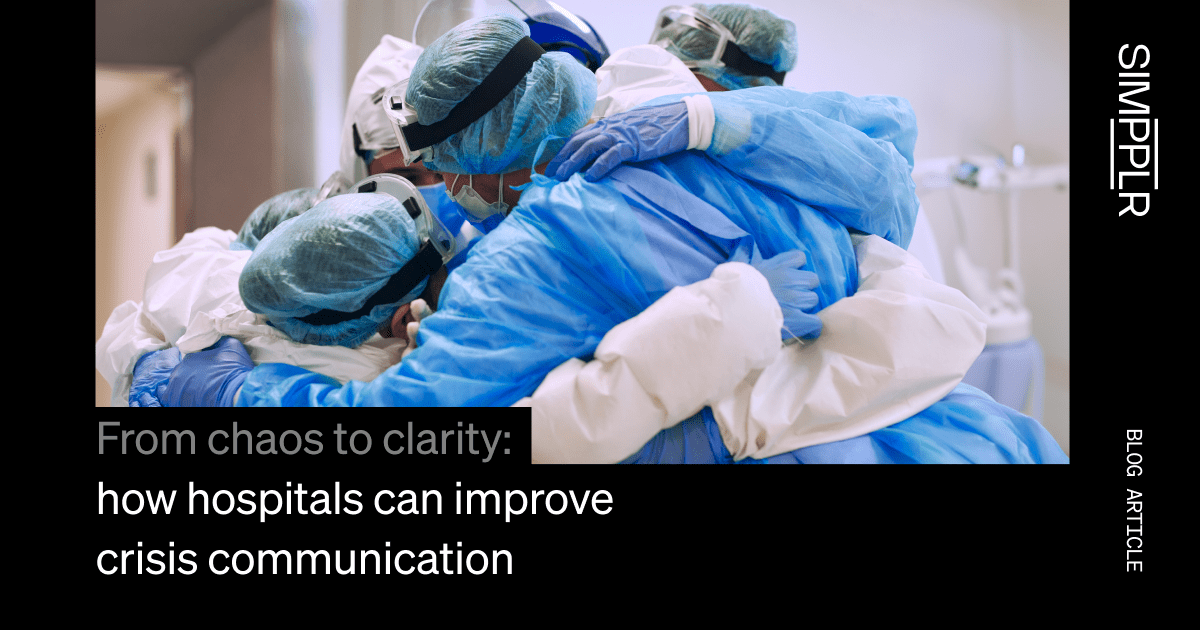
Communication is key to healthcare employee engagement
The healthcare workforce crisis has deeper roots than just exhaustion. At its core lies a fundamental disconnect between those who make decisions and those who deliver care.
Imagine finishing a 12-hour shift caring for critically ill patients only to find yourself completely out of the loop on important organizational changes. This information isolation describes the daily reality for countless healthcare workers who feel severed from their organization’s direction, decisions, and basic operational updates.
40% of HR professionals report that their organizations communicate with frontline employees only once a week.
This communication vacuum creates tangible problems. Patient-facing staff cobble together informal networks to share essential information while leadership struggles to implement new initiatives. Both sides pursue better patient outcomes but remain frustrated by the barriers between them.
Modernizing healthcare communication
Most healthcare communication strategies haven’t kept pace with the realities of clinical work. Staff meetings and occasional emails don’t align with the drastic transformation of healthcare delivery.
Healthcare workers need communication systems for their unique work environments:
- Mobile-accessible information they can check between patient interactions
- Streamlined access that eliminates password fatigue and system-hopping
- Cross-shift connections that maintain continuity despite rotating schedules
- Direct channels to share frontline observations with decision-makers
- Time-efficient formats that respect their clinical responsibilities
When healthcare leaders prioritize communication infrastructure designed for clinical realities, they do more than improve information flow. They establish a foundation for trust, recognition, and engagement that directly counteracts turnover.
Effective healthcare communication technology removes obstacles rather than creating them. The right platform puts essential information at workers’ fingertips, facilitates meaningful recognition, and ensures every employee — regardless of role or shift — remains connected to the organization’s mission. When healthcare workers feel valued, heard, and properly equipped, they become powerful drivers of organizational excellence and patient-centered care.
5 steps to improve healthcare employee engagement

By rebuilding communication for the entire workforce, healthcare organizations take a crucial step toward reversing their engagement crisis and stabilizing their teams. Healthcare organizations are finding success by addressing the communication divide head-on with targeted strategies and communication technology designed for clinical environments.
Here are five proven approaches to improve healthcare employee engagement:
1. Start with a comprehensive communication assessment
Before implementing any solution, healthcare leaders must understand the daily realities of patient-facing workers. Successful engagement strategies begin by mapping information flows and identifying critical disconnects. Recognize which staff members are systematically excluded by current communication methods, such as night shift workers, float staff, and nonclinical support roles.
2. Design an inclusive communication infrastructure
Healthcare workers rarely sit at desks, yet they need immediate access to critical information. Choose mobile-friendly platforms that deliver time-sensitive updates directly to staff wherever they work. Unified information access eliminates the frustration of navigating separate systems for protocols, schedules, and announcements. Implement enterprise search capabilities that retrieve content across business systems, dramatically reducing the time clinicians spend hunting for essential resources.
3. Create an organizational culture of belonging
Culture isn’t built through mission statements but through daily interactions, shared challenges, and collective wins. When patient-facing workers feel excluded from company culture, they become susceptible to burnout and hesitate to report problems or suggest solutions. Establish two-way channels that give frontline workers a voice in organizational decisions and create tangible connections between the organization’s mission and employees’ daily work.
4. Develop a meaningful recognition program
In high-pressure healthcare environments, employee recognition is essential for retention and engagement. Make appreciation part of daily workflows through digital platforms accessible to everyone. Deliver timely acknowledgment that celebrates contributions when the impact is most meaningful. Align recognition with core values to reinforce behaviors that drive organizational success while measuring impact to ensure appreciation reaches all employee groups equitably.
Healthcare employees whose organizations recognize team contributions are nearly 4x more likely to feel connected to company culture.
5. Measure and improve upon engagement initiatives
Without meaningful analytics, engagement efforts remain subjective and difficult to optimize. Track adoption of engagement technologies across different work contexts, identify content that resonates most with patient-facing workers, and monitor correlations between engagement metrics and operational outcomes. Advanced analytics enable healthcare leaders to move beyond basic employee engagement metrics toward predictive insights that guide proactive interventions before issues affect patient care.
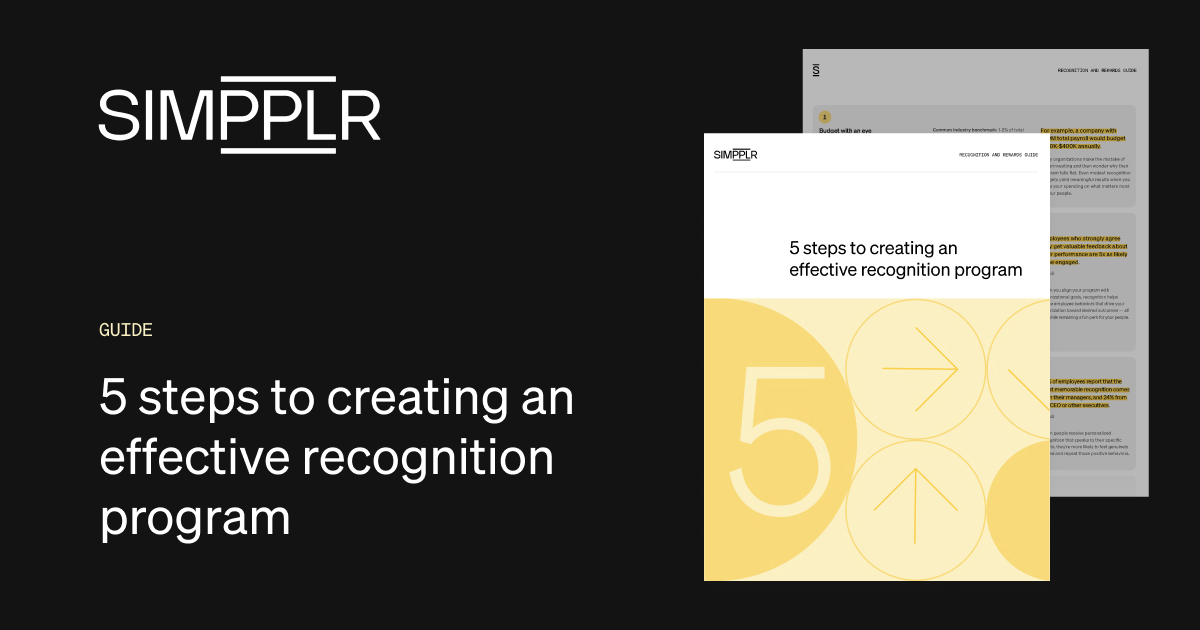
Implementing your employee engagement strategy
While these five steps provide the framework for engagement, successful implementation requires thoughtful execution. Healthcare leaders who successfully reconnect their workforces understand that technology enables connection, but leadership commitment determines whether that connection becomes meaningful engagement.
Healthcare organizations that successfully improve employee engagement:
- Begin with authentic listening to understand frontline challenges
- Set clear, measurable goals that matter to workers and leadership
- Connect individual contributors across departments and hierarchies
- Create visibility for leadership without further burdening executives
- Celebrate progress while acknowledging ongoing challenges
When implementing your engagement strategy, consider how your patient-facing healthcare workers experience communication throughout their workday. Many existing approaches assume access to email, attendance at meetings, and predictable schedules, which may not align with the typical clinical environment.
When planning healthcare employee engagement programs:
- Curate content thoughtfully with quality over quantity
- Reserve push notifications for truly urgent matters
- Personalize communications based on role, location, and shift
- Amplify peer voices rather than relying solely on corporate messaging
Healthcare organizations that recognize these realities create engagement systems that respect clinical workflows rather than disrupting them. The most successful approaches meet workers where they are — in the midst of demanding patient care — rather than adding to their burden.
Technology is the backbone of engagement strategies
In healthcare environments where patient-facing staff rarely access email and often work across multiple facilities, the right digital platform becomes essential infrastructure connecting disjointed workforces.
Simpplr’s healthcare employee experience platform meets clinical staff where they work. The mobile-friendly solution delivers critical updates to healthcare workers’ devices, while an AI assistant answers questions about shifts and protocols between patient interactions.
For leadership, the platform offers targeted communications specific to roles and departments, built-in recognition tools, and analytics that reveal workforce engagement patterns. The platform integrates with existing systems while maintaining content governance — ensuring protocols stay current without burdening already-stretched staff.
Download our comprehensive ebook, The healthcare leader’s guide to employee engagement, for in-depth strategies, practical implementation advice, and detailed case studies that will help you connect and engage your entire workforce.
Ready to find out how Simpplr can help you improve your healthcare employee experience? Request a demo today.

Watch a 5-minute demo
See how the Simpplr employee experience platform connects, engages and empowers your workforce.
- #1 Leader in the Gartner Magic Quadrant™
- 90%+ Employee adoption rate


